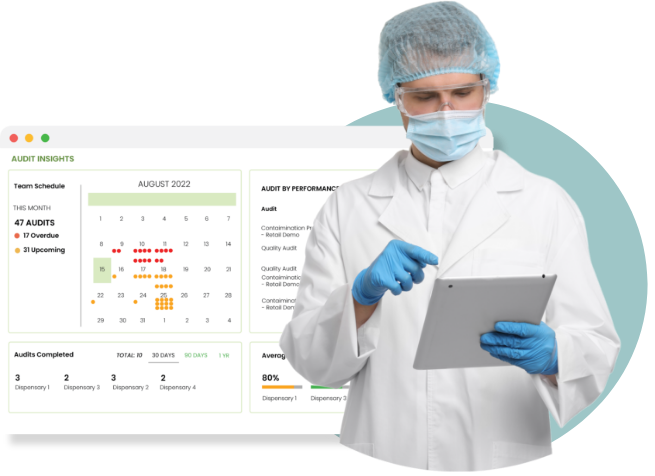Author: Ben Hartman | April 3, 2024 | 3 Min Read
What Will Training Look Like for Food Safety Regulators and Lab Professionals in the Next Five Years?

The U.S. Food and Drug Administration has published its five-year strategic plan for the training of regulatory and laboratory professionals, which is focused on developing an integrated workforce to ensure human and animal food safety.
According to Food Safety magazine, the Integrated Food Safety System Regulatory and Laboratory Training System (IFSS RLTS) Strategic plan for 2024-2028 “helps to establish a competent, integrated workforce that performs comparable work at all levels to ensure a safe and secure human and animal food supply.”
The goal of the strategic plan is to create a consistent standard of training for all regulatory and laboratory professionals in integrated food safety systems in the supervision of manufactured human food, eggs, retail food, Grade “A” milk/dairy, molluscan shellfish, and animal food.
What is an Integrated Food Safety System?
The Integrated Food Safety System (IFSS) is an approach to food safety that includes “the implementation of seamless partnerships and operations among federal, state, local, territorial, and tribal agencies as well as academic, foreign, industry, and consumer stakeholders (strategic partners) to achieve the public health mission of realizing a safer food supply,” according to the FDA.
The FDA has developed a five-year strategic plan to guide the formulation of IFSS regulatory and laboratory training. It is based on a series of key strategic principles.
These include:
- Is built with full collaboration and support of the HAF (human and animal food) regulatory and laboratory partners.
- Includes flexible and adaptable learning tools that incorporate advancements in instructional design, adult learning theories, and technology to ensure effective learning and knowledge transfer.
- Ensures course content is kept current and addresses emerging training needs.
- Standardizes job-specific competencies to ensure the consistency of training HAF regulatory and laboratory partners.
- Maximizes training capacity and access to meet the current and forecasted needs of HAF regulatory and laboratory partners.
- Leverages opportunities for HAF regulatory and laboratory partners to share in the responsibility of providing training.
- Ensures long-term sustainment of proficiency and knowledge to ensure effective and consistent application of job-specific competencies across HAF regulatory and laboratory partners.
Training content that is adapted to learners
The implementation of these strategic principles will be devoted to five main goals including the creation and enhancement of training content that can be adapted to learners and ensures the application of workforce competencies, the design of flexible training that meets stakeholder needs, the delivery of training to maximize access and meet the needs of stakeholders, the management and maintenance of IFSS regulatory and laboratory training, and the collaboration of stakeholders to ensure the effectiveness, consistency and quality of training, according to the FDA.
The FDA stated that the RLTS will provide standardized, quality training and ensure that regulatory and laboratory professionals have defined learning paths. It will also allow these professionals to complete courses in a variety of modalities including virtual on-demand, virtual instructor-led, and in-person instructor-led, among others.
“A more robust learning experience”
In a video, the FDA said that the reimagined RLTS “will revolutionize how training is administered in the United States.”
In the video, Steven Mandernach, Executive Director of the Association of Food and Drug Officials praised the fact that RLTS will create a uniform training system that will bring regulators and laboratory professionals together with the same courseware and goals.
“Another advantage of this system is that it will allow for both regulators and laboratorians to train together and use the same curriculum and courses across them. Oftentimes they are doing very similar things but are using different courses for everyone. Using the same course and having people in the same classroom often makes it a more robust learning experience.”
Contributors

Ben Hartman
From HACCP certification to the basics of hygiene, our on-demand courseware has you covered.





.jpg?width=120&height=80&name=Baby%20(1).jpg)

